-
 Bitcoin
Bitcoin $107,323.9971
-0.42% -
 Ethereum
Ethereum $2,442.7415
-1.58% -
 Tether USDt
Tether USDt $1.0005
0.00% -
 XRP
XRP $2.0902
-4.49% -
 BNB
BNB $645.3561
-0.33% -
 Solana
Solana $140.8832
-2.81% -
 USDC
USDC $0.9999
0.01% -
 TRON
TRON $0.2713
0.17% -
 Dogecoin
Dogecoin $0.1611
-2.35% -
 Cardano
Cardano $0.5556
-2.75% -
 Hyperliquid
Hyperliquid $36.8045
-1.10% -
 Bitcoin Cash
Bitcoin Cash $494.4393
-1.23% -
 Sui
Sui $2.6406
-2.97% -
 Chainlink
Chainlink $13.0846
-1.74% -
 UNUS SED LEO
UNUS SED LEO $9.0127
0.09% -
 Avalanche
Avalanche $17.4023
-1.37% -
 Stellar
Stellar $0.2339
-3.25% -
 Toncoin
Toncoin $2.8330
-0.57% -
 Shiba Inu
Shiba Inu $0.0...01124
-3.38% -
 Litecoin
Litecoin $84.9229
-0.60% -
 Hedera
Hedera $0.1432
-3.84% -
 Monero
Monero $311.0740
-1.35% -
 Bitget Token
Bitget Token $4.6591
3.94% -
 Dai
Dai $1.0001
0.01% -
 Ethena USDe
Ethena USDe $1.0000
-0.01% -
 Polkadot
Polkadot $3.3033
-1.64% -
 Uniswap
Uniswap $6.9221
-4.55% -
 Pi
Pi $0.5546
-4.86% -
 Aave
Aave $257.5046
-1.30% -
 Pepe
Pepe $0.0...09215
-3.26%
Is it confirmed that the breakthrough is effective if the gap is not filled for three days?
A breakout in crypto trading occurs when price moves beyond key support/resistance levels, often confirmed by sustained movement over 3 days, higher volume, and technical indicators like moving averages or RSI.
Jun 27, 2025 at 04:07 pm
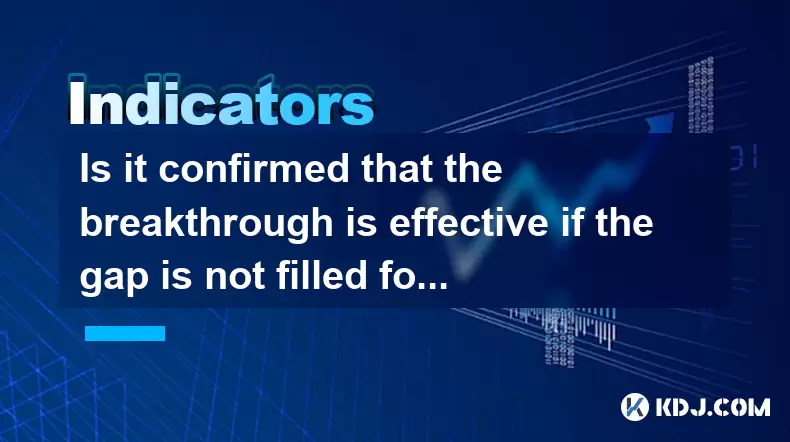
Understanding Breakouts in Cryptocurrency Trading
In the world of cryptocurrency trading, a breakout refers to a price movement that exceeds a defined support or resistance level. Traders and analysts often monitor these breakouts to identify potential shifts in market sentiment. However, not all breakouts are created equal. A key question arises: is it confirmed that the breakout is effective if the gap is not filled for three days?
A gap in technical analysis occurs when there's a space between two consecutive candlesticks on a chart, indicating that no trading occurred at certain price levels. In traditional markets, gaps are common due to after-hours trading or news events. In cryptocurrency, which operates 24/7, true gaps are rare but can still occur during extreme volatility or exchange downtimes.
Why Three Days Matters in Confirming a Breakout
The idea that a breakout is confirmed if the gap remains unfilled for three days comes from conventional stock market analysis. This rule of thumb suggests that if the price does not return to its pre-breakout range within three trading sessions, the breakout may be valid.
However, in the context of cryptocurrency, where trading never stops and volatility is high, this timeframe isn't always directly applicable. Still, many traders use a similar logic—monitoring whether the price holds above or below a key level for a sustained period, typically measured in days rather than hours.
It’s crucial to understand that the absence of a gap fill doesn’t automatically confirm a breakout's strength. Instead, it should be used alongside other indicators such as volume, moving averages, and order flow to assess validity.
Volume Analysis During a Gap Breakout
One of the most critical factors in confirming any breakout is volume. A genuine breakout usually coincides with a surge in trading volume, signaling strong market participation. If the price breaks out without a corresponding increase in volume, it might indicate a false move.
For example, if Bitcoin breaks above a resistance level of $30,000 but the volume remains flat compared to average daily volume, the breakout could be considered weak. Conversely, if Bitcoin surges past $30,000 with a 50% increase in volume, it adds credibility to the move.
Monitoring volume over the next few days becomes essential. If volume continues to remain elevated and the price stays above the breakout level, it increases confidence in the breakout’s legitimacy.
Price Action Confirmation Techniques
Beyond volume, analyzing price action provides further insight into whether a breakout is sustainable. Traders often look for candlestick patterns, pullbacks, and retests of the breakout level.
- Candlestick patterns: Bullish or bearish engulfing patterns after a breakout can indicate whether momentum is continuing or reversing.
- Pullbacks and retests: After breaking out, the price may return to test the former resistance (now support) or vice versa. If the price holds above the breakout zone during a retest, it reinforces the strength of the move.
In the case of a gap breakout, watching how the price behaves over the next 24–72 hours is vital. If the price closes each day above the breakout level without significant retracement, it supports the claim that the breakout is gaining traction.
Using Technical Indicators to Validate the Move
To enhance confirmation beyond visual analysis, traders often rely on technical indicators. The following tools can help determine whether a breakout is valid:
- Moving Averages: If the price remains above a key moving average like the 50-day or 200-day SMA after a breakout, it signals ongoing strength.
- Relative Strength Index (RSI): An RSI that stays within neutral territory (between 30 and 70) indicates that the breakout hasn’t been overextended or oversold.
- MACD: A bullish MACD crossover shortly after a breakout can provide additional confirmation.
When these indicators align with price action and volume, they strengthen the conviction behind a breakout. For instance, if Ethereum breaks out of a consolidation pattern, maintains higher lows, and sees MACD cross above the signal line, the probability of a successful breakout increases significantly.
Frequently Asked Questions
Q1: What defines a "gap" in cryptocurrency charts?
A gap in crypto charts typically appears during sudden price movements where no trades occurred at certain price levels. Although rare due to 24/7 trading, gaps can form during sharp moves caused by news events or exchange issues.
Q2: Can a breakout fail even if the gap isn’t filled for three days?
Yes, a breakout can still fail despite the gap remaining unfilled. Other factors like declining volume, rejection candles, or indicator divergence can suggest weakness.
Q3: How do I differentiate between a real breakout and a fakeout?
Real breakouts are supported by rising volume, sustained price action above/below key levels, and positive indicator alignment. Fakeouts often lack volume and result in quick reversals.
Q4: Are gaps more significant on higher timeframes like daily or weekly charts?
Gaps on higher timeframes tend to carry more weight because they reflect broader market sentiment and longer-term trends, making them more reliable for breakout validation.
Disclaimer:info@kdj.com
The information provided is not trading advice. kdj.com does not assume any responsibility for any investments made based on the information provided in this article. Cryptocurrencies are highly volatile and it is highly recommended that you invest with caution after thorough research!
If you believe that the content used on this website infringes your copyright, please contact us immediately (info@kdj.com) and we will delete it promptly.
- Crypto Picks: Avalanche and Morpho Make Grayscale's Top 20, Leaving Optimism Behind!
- 2025-06-27 20:30:12
- NodeOps, Token Generation, and Binance Wallet: A Deep Dive into Binance's Evolving Ecosystem
- 2025-06-27 20:50:12
- Bitcoin, Memecoins, and Returns: A Wild Ride Through Crypto Town
- 2025-06-27 20:30:12
- Cryptocurrencies Under $1: Unveiling Hidden Growth Potential in 2025
- 2025-06-27 21:15:12
- Degen Lab: The AI Meme Coin Factory Revolutionizing Public Presales
- 2025-06-27 20:55:12
- Meme Coins, Long Term, and Presales: What's the Buzz?
- 2025-06-27 20:56:57
Related knowledge
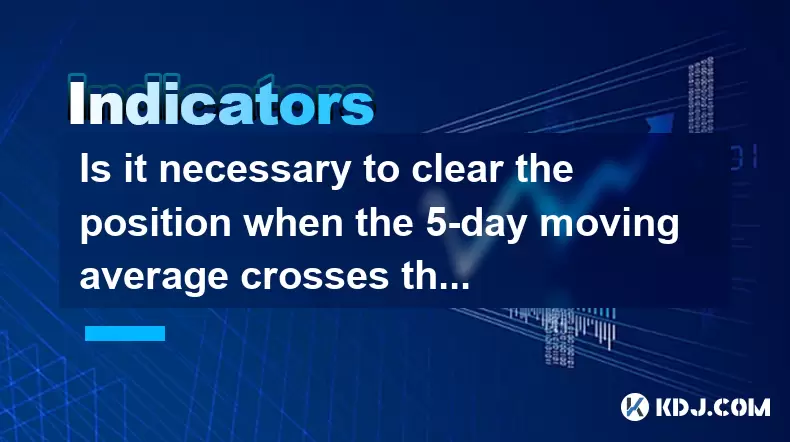
Is it necessary to clear the position when the 5-day moving average crosses the 10-day moving average?
Jun 27,2025 at 07:21pm
Understanding the 5-Day and 10-Day Moving AveragesIn the realm of technical analysis within the cryptocurrency market, moving averages play a crucial role in identifying trends and potential reversal points. The 5-day moving average (MA) and 10-day moving average are two of the most commonly used short-term indicators by traders. These tools smooth out ...
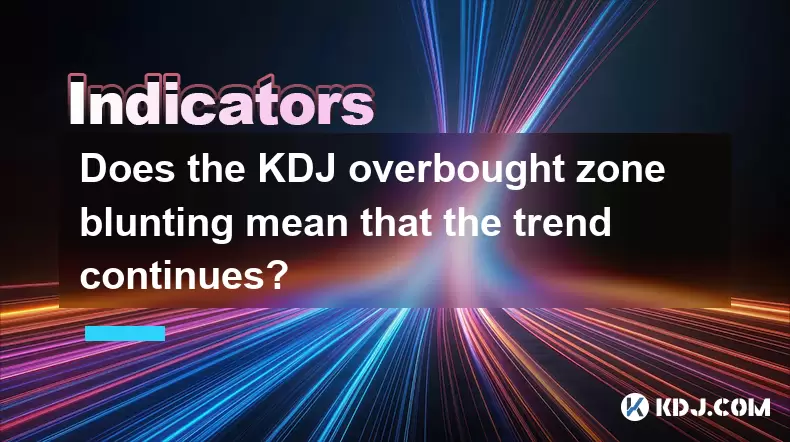
Does the KDJ overbought zone blunting mean that the trend continues?
Jun 27,2025 at 03:35pm
Understanding the KDJ Indicator in Cryptocurrency TradingThe KDJ indicator, also known as the stochastic oscillator, is a popular technical analysis tool used by traders to identify overbought or oversold conditions in asset prices. In the cryptocurrency market, where volatility is high and trends can change rapidly, understanding how to interpret the K...
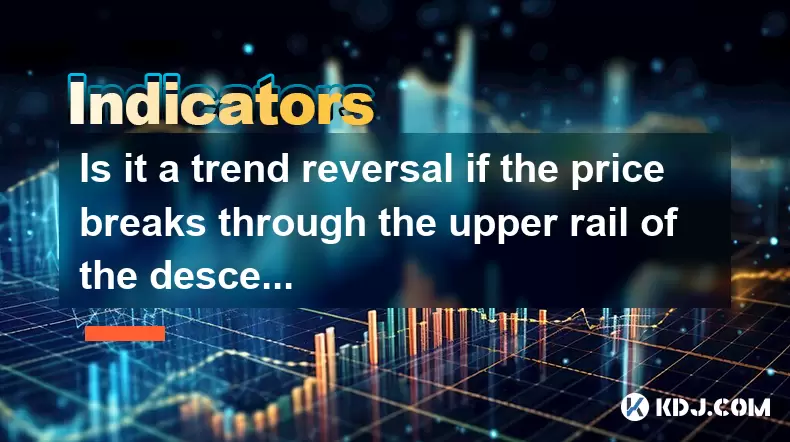
Is it a trend reversal if the price breaks through the upper rail of the descending channel and then steps back without breaking?
Jun 27,2025 at 05:35pm
Understanding the Descending Channel PatternA descending channel is a technical analysis pattern formed by two parallel downward-sloping trendlines, one acting as resistance and the other as support. This pattern typically indicates a continuation of a downtrend, where price action oscillates between these two boundaries. Traders often look for breakout...
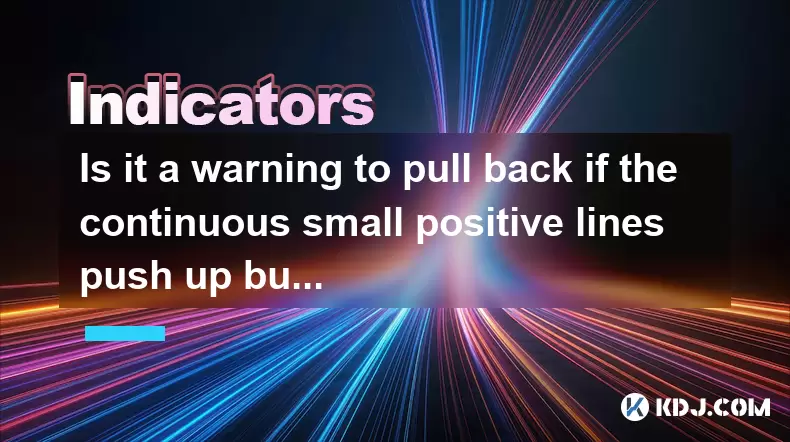
Is it a warning to pull back if the continuous small positive lines push up but the volume is insufficient?
Jun 27,2025 at 05:28pm
Understanding the Pattern: Continuous Small Positive LinesIn technical analysis, continuous small positive lines refer to a series of candlesticks where each candle closes slightly higher than its open. These candles usually have short wicks and indicate a gradual upward movement in price. Traders often interpret this pattern as a sign of steady buying ...
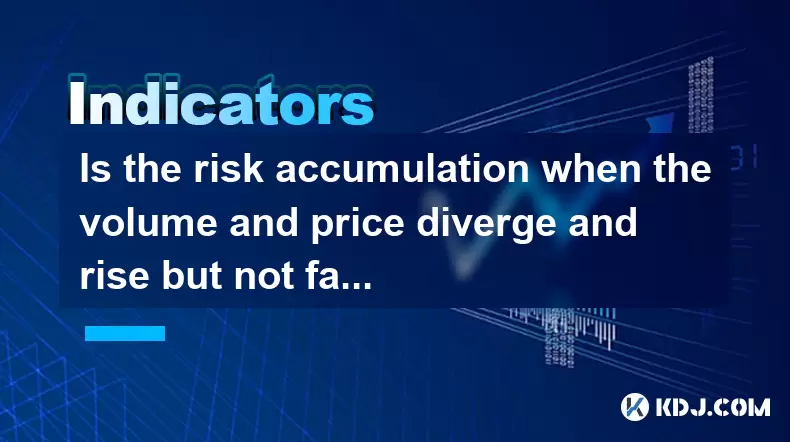
Is the risk accumulation when the volume and price diverge and rise but not fall?
Jun 27,2025 at 04:28pm
Understanding Volume and Price Divergence in Cryptocurrency TradingIn cryptocurrency trading, the relationship between volume and price plays a critical role in identifying market sentiment. When volume increases while price rises, it typically signals strong buying pressure and healthy market participation. However, when this correlation breaks—especia...
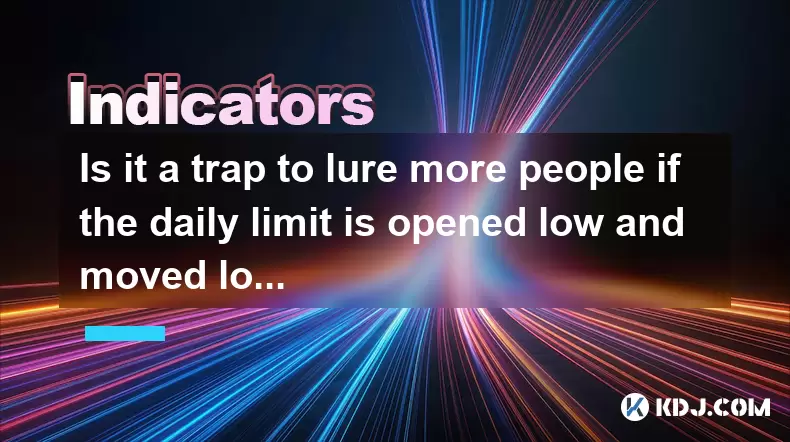
Is it a trap to lure more people if the daily limit is opened low and moved low the next day?
Jun 27,2025 at 08:21pm
Understanding the Mechanics of Daily Limits in Cryptocurrency TradingIn cryptocurrency trading, daily limits refer to the maximum percentage by which a digital asset’s price can rise or fall within a 24-hour period. These limits are often implemented by exchanges to prevent extreme volatility and protect traders from sudden, drastic losses. When a coin ...

Is it necessary to clear the position when the 5-day moving average crosses the 10-day moving average?
Jun 27,2025 at 07:21pm
Understanding the 5-Day and 10-Day Moving AveragesIn the realm of technical analysis within the cryptocurrency market, moving averages play a crucial role in identifying trends and potential reversal points. The 5-day moving average (MA) and 10-day moving average are two of the most commonly used short-term indicators by traders. These tools smooth out ...

Does the KDJ overbought zone blunting mean that the trend continues?
Jun 27,2025 at 03:35pm
Understanding the KDJ Indicator in Cryptocurrency TradingThe KDJ indicator, also known as the stochastic oscillator, is a popular technical analysis tool used by traders to identify overbought or oversold conditions in asset prices. In the cryptocurrency market, where volatility is high and trends can change rapidly, understanding how to interpret the K...

Is it a trend reversal if the price breaks through the upper rail of the descending channel and then steps back without breaking?
Jun 27,2025 at 05:35pm
Understanding the Descending Channel PatternA descending channel is a technical analysis pattern formed by two parallel downward-sloping trendlines, one acting as resistance and the other as support. This pattern typically indicates a continuation of a downtrend, where price action oscillates between these two boundaries. Traders often look for breakout...

Is it a warning to pull back if the continuous small positive lines push up but the volume is insufficient?
Jun 27,2025 at 05:28pm
Understanding the Pattern: Continuous Small Positive LinesIn technical analysis, continuous small positive lines refer to a series of candlesticks where each candle closes slightly higher than its open. These candles usually have short wicks and indicate a gradual upward movement in price. Traders often interpret this pattern as a sign of steady buying ...

Is the risk accumulation when the volume and price diverge and rise but not fall?
Jun 27,2025 at 04:28pm
Understanding Volume and Price Divergence in Cryptocurrency TradingIn cryptocurrency trading, the relationship between volume and price plays a critical role in identifying market sentiment. When volume increases while price rises, it typically signals strong buying pressure and healthy market participation. However, when this correlation breaks—especia...

Is it a trap to lure more people if the daily limit is opened low and moved low the next day?
Jun 27,2025 at 08:21pm
Understanding the Mechanics of Daily Limits in Cryptocurrency TradingIn cryptocurrency trading, daily limits refer to the maximum percentage by which a digital asset’s price can rise or fall within a 24-hour period. These limits are often implemented by exchanges to prevent extreme volatility and protect traders from sudden, drastic losses. When a coin ...
See all articles























































































